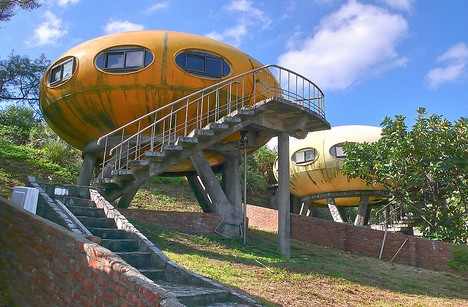


Later, Johnson dabbled in the ‘ international style’ with several high-rise apartment buildings along the Detroit riverfront. While only the main pavilion was ever constructed, the Bethel A.M.E Church remains one of Detroit’s most recognizable architectural landmarks, and is still home to the congregation that hired Johnson to build it. The entire complex would sit nestled around a landscaped reflecting pool, and would connect to a block of modernist administrative offices. Inside, a vaulted ceiling would float weightlessly over an open sanctuary. In Johnson’s plan, a complex was formed from two pavilions, each with that dramatically upswept roofline that Johnson loved. In 1974, Johnson designed a new building for the congregation of the Bethel African Methodist Episcopal Church, which has existed in Detroit since the 1840s.

Grand Design Plans for Bethel African Methodist Episocpal Church While the restaurant was popular in its day, the building has been abandoned for decades. Stanley Hong was so pleased that he had Johnson design a modernist home for his own family.
#SPACE AGE HOUSE DRIVER#
The restaurant’s appearance was so unique that it served as advertisement for the food - and surely enticed many a driver to stop in. The result was a fanciful building that centered around a roofline reminiscent of the launch trajectory of a rocket.īelow the sweeping prow were swooping curved walls and a colorful facade. One notable example is Johnson’s design for the Stanley’s Mannia cafe, commissioned by the restaurateur Stanley Hong.
#SPACE AGE HOUSE SERIES#
But rather than construct a series of staid churches, Johnson often used his work during the period to explore the futuristic Googie style, which sprung from a collective fascination with the technological advancements of the sixties. Modern Googie Style Experimentationįrom his office on West Grand, Johnson quickly developed a large roster of clients, in particular church congregations looking to build new places of worship. But after a few years in the ranks of draftsmen, Johnson struck out on his own when White & Griffin ceased operations in order to work on projects in Liberia. Williams, the support and mentorship at White & Griffin was formative. For Johnson, who noted that he found inspiration in the career of Black architects like Paul R. The firm’s partners made a point of mentoring young Black architects in an industry where racism was rampant.

The firm was one of the first Black-owned architecture firms in the country, and it was a major force in Detroit’s design scene until it closed in 1954. For the Detroit architect Nathan Johnson, the influx of building projects in the 1960s and 1970s fueled by the golden age of the automobile industry were an opportunity to introduce the city to his uniquely forward-looking style.īorn in Kansas City, Johnson began working for White & Griffin in Detroit in 1950 after meeting founder Don White at a convention for their fraternity, Kappa Alpha Psi.


 0 kommentar(er)
0 kommentar(er)
